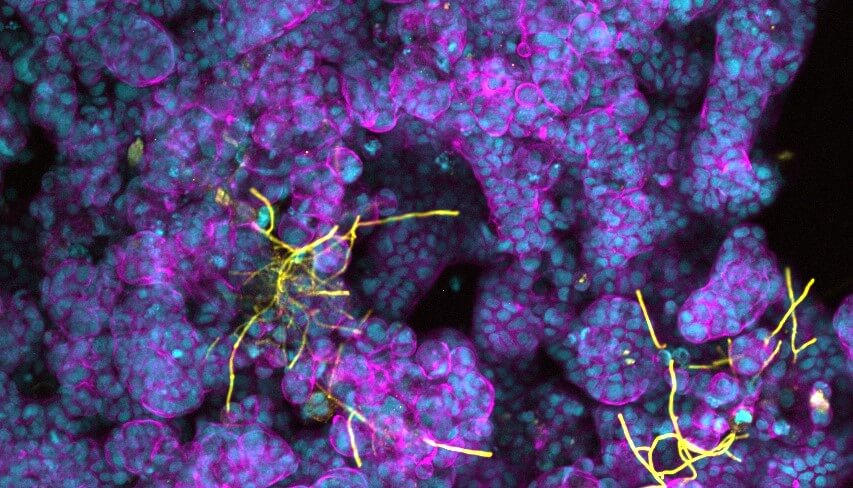Scientists have found a new way to curb Candida yeast infections. A team of international researchers uncovered a previously unknown defense system employed by the immune system in fighting this particular fungal infection.
Most healthy people have low levels of Candida in their body as it forms part of the microbiome. The immune system usually holds this fungal infection in check, but it can grow excessively and invade the lining of the mouth, the vagina, the skin or other parts of the body. Candida infections can be life-threatening when a person’s immune system has been weakened. Antibiotics can also release local or invasive Candida eruptions by providing this yeast with an unfair advantage against other microorganisms.
The immune cells that previously got most of the credit for defending the body against Candida were small, round lymphocytes of the T cell type, called TH17. In the new study, Dr. Jan Dobes, of the Weizmann Institute of Science, “discovered that a powerful commando unit of TH17 cells capable of fighting Candida cannot be generated without crucial early support from an entirely different contingent: a subset of rare lymphoid cells known as type-3 innate lymphoid cells, or ILC3, that express a gene called the autoimmune regulator, or Aire.”
Study authors liken these two groups of cells like foot patrols and specialized units joining forces against a common enemy. The Aire-ILC3s spring into action instantly against a Candida infection. The TH17s takes several days or weeks to respond, but launches a much more targeted and potent attack.
Researchers say the Air-ILC3s engulfs the yeast whole when Candida infects tissues, chops them up and displays some of the yeast pieces on their surfaces. The T cells then start dividing rapidly, “soaring in number form a few lone commandos to several hundred or even thousands of Candida-specific fighters, capable of destroying the yeast at the sites of infection.”
“We have identified a previously unrecognized immune system weapon that is indispensable for orchestrating an effective response against the fungal infection,” says study author Jakub Abramson, a professor with the Weizmann Institute of Science, in a statement.
Candida commonly leads to severe infections in people with a rare autoimmune syndrome caused by defects in the Aire gene. Abramson was intrigued by this and conducted several studies of this gene to help clarify its role in preventing autoimmune disorders. Abramson discovered that Aire-expressing cells in the thymus instruct developing T cells to refrain from attacking the body’s own tissues. When this gene is defective, T cells fail to receive proper instructions, causing widespread autoimmunity that devastates multiple body organs. However, researchers were puzzled as to why Aire-deficient patients who suffered from a dangerous autoimmune syndrome also developed chronic Candida infections.
To find an answer to this question, researchers genetically engineered two groups of mice: One group lacked Aire in the thymus, while the other group went without ILC3s in the lymph nodes. The first group developed autoimmunity and was able to fight off Candida. The second group, though, which lacked Aire in ILC3s, didn’t suffer from autoimmunity, but weren’t able to generate numerous specific Candida-specific T cells and failed to eliminate Candida infections.
“We found an entirely new role for Aire, one that it plays in the lymph nodes — turning on a mechanism that increases the numbers of Candida-fighting T cells,” explains Dobes.
Researchers hope their findings can develop new treatments to combat severe Candida and possibly other fungal infections.
The study is published in the journal Nature Immunology.

I have found that a Candida overgrowth in the gut can be eliminated by saturating sugar cubes with Pure Gum Turpentine (plant based) and consuming one cube first thing in the morning and one cube last thing at night for 3 – 5 days works very effectively. Follow up after with a good Probiotic for the following week. This was the favoured cure over 100 yrs ago.